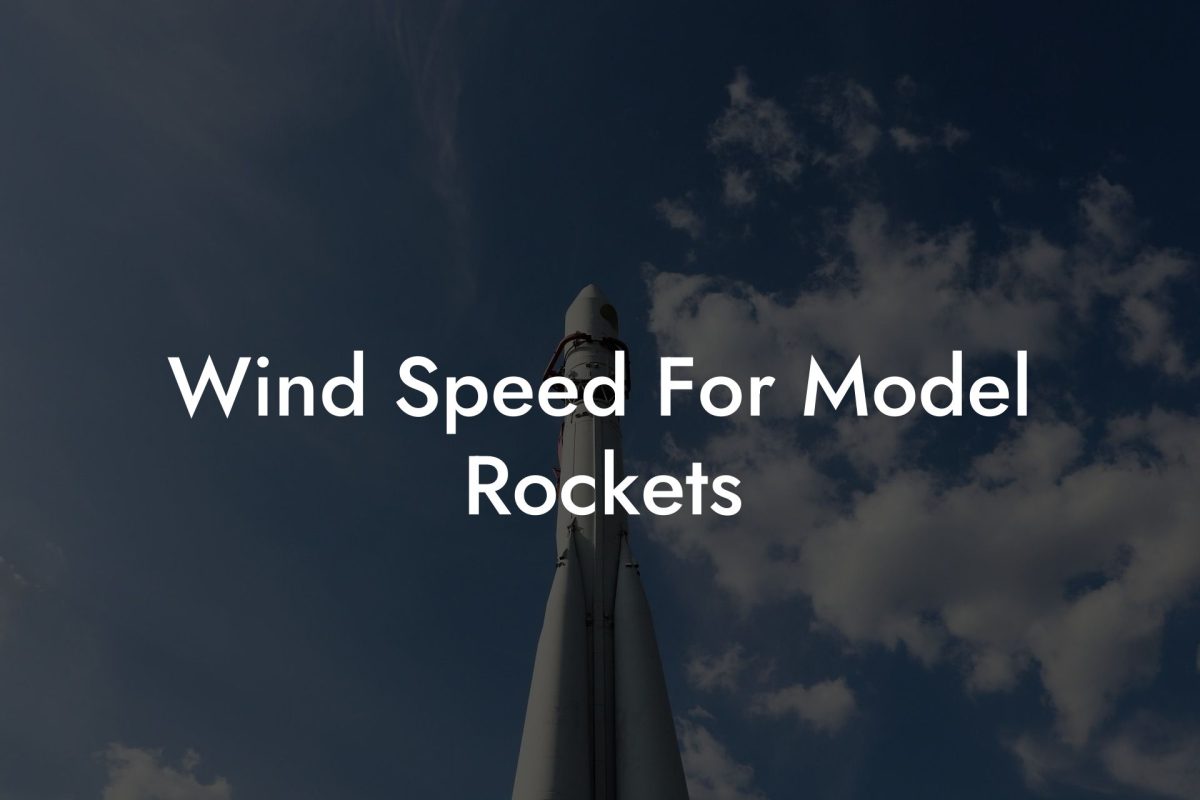Ready to take your model rocketry skills to new heights? It's time to explore the world of advanced model rockets, where you can build high-powered rockets capable of reaching incredible altitudes. In this comprehensive guide, we'll dive into the fascinating realm of advanced model rocketry, covering everything from the types of rockets available to essential safety guidelines. Launch your passion for rocketry into overdrive and join us on this thrilling journey through advanced model rockets.
Advanced Model Rockets Table of Contents
Types of Advanced Model Rockets
Types of Advanced Model Rockets
Mid-Power Rockets
While not quite as powerful as high-power rockets, mid-power rockets offer a significant step-up from the beginner kits available. These rockets typically use composite motors, ranging from E to G sizes. Mid-power rockets fly higher and require more skill to build and launch, making them ideal for enthusiasts looking to expand their rocketry skills.
High-Power Rockets
High-power rockets represent the pinnacle of amateur rocketry. Featuring motor sizes H and above, these rockets can reach astounding altitudes of over 30,000 feet. With increased power comes increased responsibility, as various certifications and licensing are often required to build and launch high-power rockets.
Essential Components for Advanced Model Rockets
While beginner rockets may consist of only a few basic parts, advanced model rockets require the use of more specialized components to ensure a successful flight. The most common components include:
- Airframe: the body tube and nose cone that house the rocket's components.
- Motor: the engine that propels the rocket skyward, ranging from E to O sizes for advanced rockets.
- Recovery system: typically a parachute or streamer that allows the rocket to return to the ground safely.
- Guidance system: electronic devices such as altimeters and timers that ensure a successful flight and recovery.
- Launch pad and control system: essential for the safe and stable launch of advanced rockets.
Safety Considerations for Advanced Model Rockets
National Association of Rocketry (NAR) and Tripoli Rocketry Association (TRA) Certifications
To build and launch high-power rockets, certification is often required. Both the NAR and TRA offer certification programs that cover the various levels of model rocketry. By obtaining the required certifications, you can ensure that you are following the proper safety guidelines and adhering to the rules and regulations governing advanced rocketry.
Federal Aviation Administration (FAA) Regulations
Since advanced model rockets have the potential to enter controlled airspace, you must adhere to specific FAA regulations to avoid endangering aviation safety. Always be sure to follow FAA guidelines and obtain the necessary waivers for high-altitude launches.
Safety Practices
- Always launch rockets in an open area, clear of obstacles and flammable materials.
- Check your rocket for any damage or wear before each launch.
- Ensure all components, especially the recovery system, are in proper working order.
- Review the instructions and safety guidelines provided by the rocket and motor manufacturers.
Advanced Model Rockets Example:
Imagine yourself preparing for the exciting launch of your advanced model rocket. You've meticulously assembled your I-class engine-powered rocket, equipped with a dual-deployment recovery system and GPS tracking for a safe landing. As you prepare for takeoff, you gain approval from the FAA for your high-altitude launch, ensuring you're following the proper regulations. The countdown begins, and with a roar, your rocket shoots skyward, reaching astonishing heights as it leaves the launch pad. With your advanced model rocket, you've taken your passion for rocketry to new and exhilarating heights.
Now that you've explored the thrilling realm of advanced model rockets, there's no turning back. Whether you choose to tackle mid-power or high-power rockets, you are sure to experience an adrenaline-packed journey as you master the art of advanced rocketry. Don't forget to share this informative guide with your fellow rocket enthusiasts and explore the other amazing guides and resources available on Austin Rockets. Together, let's continue pushing the limits and reaching for the stars with our model rockets.













